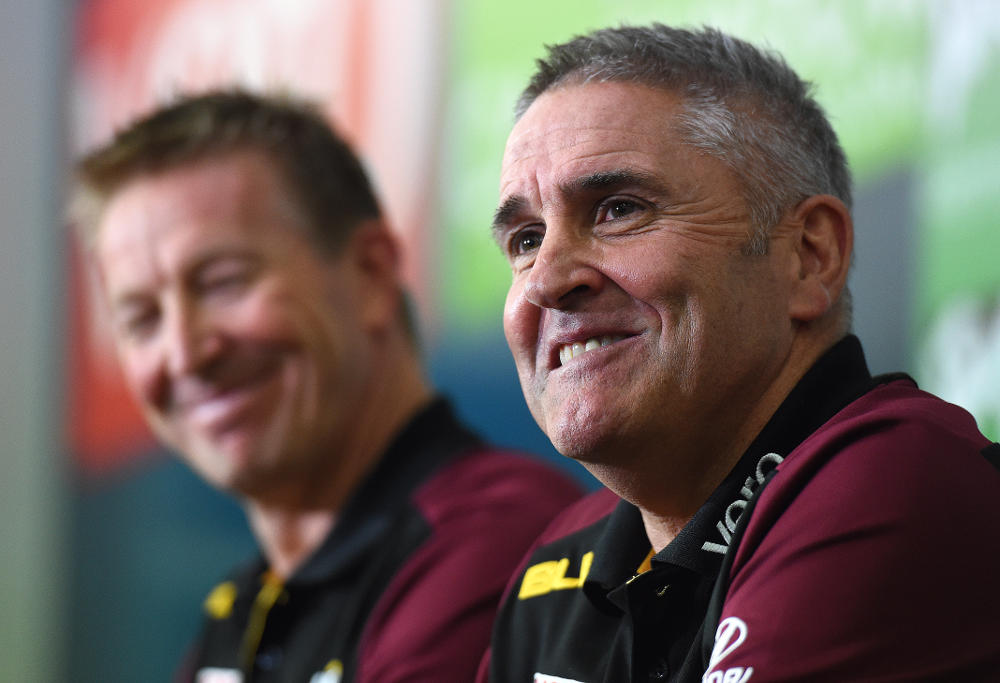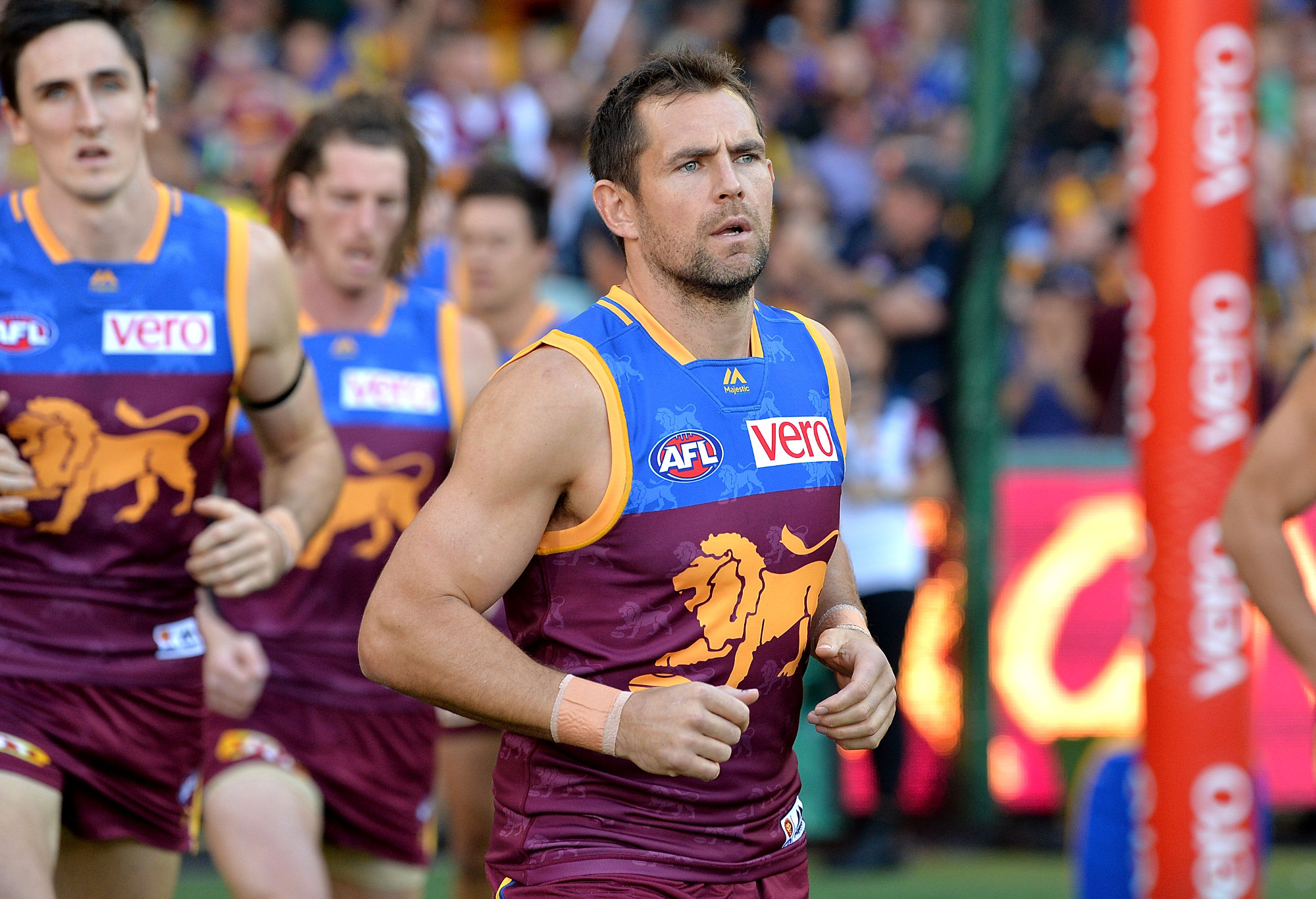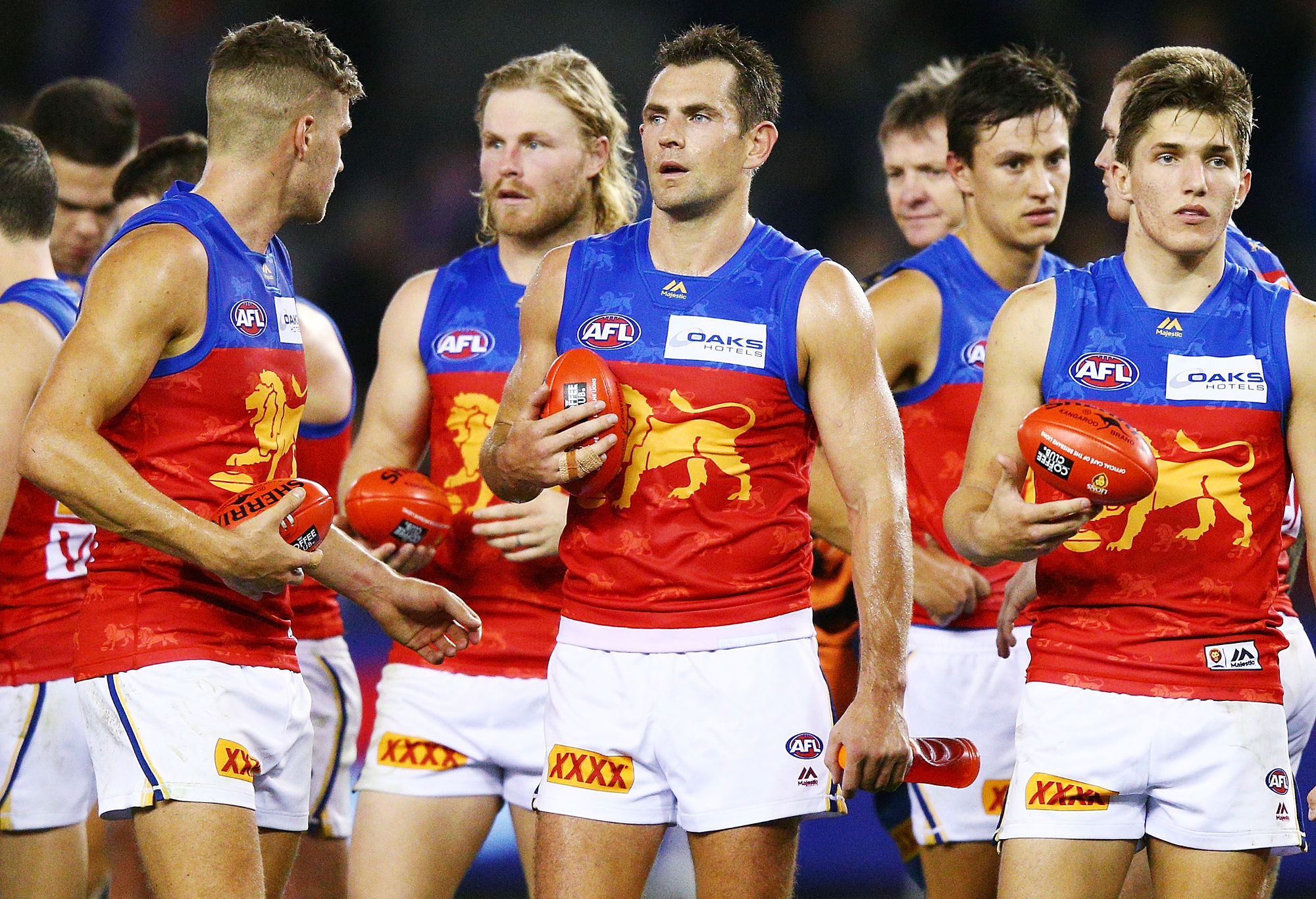A team’s record is rarely a perfect indicator of its underlying potential. So it is for this year’s Brisbane Lions, who should harbour realistic ambitions to finish inside the top eight in 2019.
Ambition is the key here. This is not a prediction; Brisbane has lived inside the bottom four for half a decade, and has one finals appearance to its name this side of the holy trinity of Michael Voss, Jason Akermanis and Simon Black. Still, there is plenty to like about Brisbane’s direction under coach Chris Fagan.
Percentage is our indicator here. The Lions recorded a percentage of 61.6 per cent in 2016 – the club’s worst since the merger with Fitzroy. The first year of the Fagan era bought a strong improvement to 74.3 per cent, the second year bought a follow up increase to 89.1 per cent.
Those 22 game samples are telling, because they show a structural change to the output Brisbane’s football has produced.
For so long the Lions were a tri-colour turnstile. Brisbane conceded an extraordinary 130.1 points per game in the last year of premiership assistant Justin Leppitsch, a mark that was only reached in 15 of 198 games in the 2018 season. They were conceding that on average, meaning some games resulted in even more points being put on the board by the opposition.
There was no such thing as two-way running in the midfield, no forward press to speak of, and its defensive personnel group was young and outmatched to the point of capitulation.
The first year of Fagan bought with it a 350-point aggregate improvement in Brisbane’s defence. However, that bought the per game total from the “historically atrocious” to merely “very bad” 114.8 points per game. The midfielders started running back, and the defensive group put on a few kilograms. Still, 100 points per game on average is far too many.

Brisbane Lions General Manager David Noble (left) and Chris Fagan (right). (AAP Image/Dave Hunt)
After updating my database yesterday, I was pleased to discover Brisbane has improved markedly in its overall defensive performance in 2018. The Lions conceded just 91.9 points per game, an extraordinary six-goal plus turnaround for just 44 games ago. They ultimately conceded the fifth-most points on the year, but in this case fifth-most is better than most-most.
It is one of many aspects of the Brisbane Lions that is trending in the right direction. Another is the club’s list demographics, which appear to be well on the road to recovery after the club’s well-publicised – and perhaps overblown – player retention issues earlier in the decade.
The Lions had the youngest list in the competition coming into the 2018 season, with an average age of 23.3 years (league average 24.2) and 31 players under the age of 24 (league average 24). Just six players over the age of 25 saw meaningful playing time this year: Stefan Martin, Dayne Zorko, Dayne Beams, Luke Hodge, Mitch Robinson and Daniel Rich.
These Lions are very young on the whole, with some experienced heads around them, in a not dissimilar fashion to the GWS Giants of four seasons ago (albeit without the draft pedigree).

Luke Hodge of the Lions. (Photo by Bradley Kanaris/Getty Images)
To keep that tenuous comparison going, there is a rump of players in the pre-prime age group who will grow together. Cam Rayner, Alex Witherden, Hugh McCluggage, Jarrod Berry and Eric Hipwood are all 21 or younger and all played at least 20 games in 2018. In the 21 to 23 bracket is Harris Andrews (who was selected in the All Australian squad), Daniel McStay, Charlie Cameron and a host of the sorts of role players every contending teams needs.
There is a bit of a gaping hole between this group and the seasoned veterans up the top, owing somewhat to the club’s issues earlier in the decade. Coincidentally, no member of Brisbane’s 2018 playing list was born in 1993. And while Brisbane’s list management situation is looking up, it pays to point out two things.
First, we’re not 12 months removed from Josh Schache’s promise-to-stay-but-then-go-anyway departure. While the Lions have drafted and recruited with a more local bent recently it is impossible to say that ‘retention issues’ are no longer a challenge. It’s the sort of thing that won’t go away until it has gone away, which sounds silly but everything about player movement in the AFL is a little silly.
And second, though the list is looking positive down below, that gap in the late-pre-prime and early prime age demographic is not easily overcome. This is of particular importance because the Lions got a combined 143 of a possible 154 games out of its seven oldest players (excluding Rohan Bewick). It’s an ideal situation for the Lions, and one they may not have the luxury of experiencing every year.
Which is where things get interesting for Brisbane heading into the 2018 off season – and into 2019.
Brisbane finished in the bottom four with five wins, but with a very high percentage of just shy of 90. According to my schedule-adjusted Pythagorean win model, the Brisbane Lions performed at a level that should have seen the club reach eight wins – their record was understated by 3.4 wins on this metric.
The biggest reason for this was its performance in close games. Brisbane played in seven games with a final margin of 12 points or less, and won just one of them (against Gold Coast in Round 22). It was level with its opponent with five minutes or less remaining in two of its losses, and had two opportunities to win if the final scoring shot it executed was a goal instead of a behind. If the Lions had just a little more luck over the course of these games it could have easily been knocking on the door of the 12-10 club that ran from ninth to 12th in 2018.
Brisbane’s ladder position does come with a silver lining. When the AFL sets next year’s schedule it will use the weighted fixturing rule that splits the competition into six groups based on ladder position. Teams in the bottom six tend to play at least three of their peer group as part of their double ups; Brisbane almost certainly will because their intrastate rivals the Gold Coast Suns are in that sextet.

Luke Hodge and his Lions. (Photo by Michael Dodge/Getty Images)
A cushy draw has helped support the finals aspirations of many teams in recent years. By my reckoning North Melbourne had the easiest draw of the year, and almost rode it to a stunning finals campaign (it was more than that of course, but you get what I mean). Melbourne, with the second cushiest draw in the competition, was similarly blessed.
Fixture luck has also been part of the reason why Collingwood was able to surprise most with its surge to the top four. Richmond’s 2017 campaign was beset by howls of ‘who’ve they beaten?’ until they made a preliminary final.
The Lions will get this benefit despite performing at a level which may have otherwise exposed them to a finish inside the middle bracket of the competition. It works soundly in the club’s favour heading into 2019.
Brisbane also has some scope to continue to build its list through acquisitions and delisted free agency – which has been a happy hunting ground in filling out the bottom of its best 22 in recent years.
Fagan has made overtures regarding a ‘quality player’ the Lions are targeting; that could be anyone. Brisbane will likely manufacture more than the mandatory six list spots required given it has a number of players between its young stars and veteran class who couldn’t break into the team in 2018.
Clubs across the league are beginning to look at the delisted free agency pool with anticipation. That trend will only grow as list managers realise a talented but ill-fitting 23 year old who has been in the system for half a decade is worth more than an 18 year old taken in the ninth round of the draft. And their salaries are far more flexible than the arbitrated values included in draftee contracts.
A 23 year old Billy Hartung, who I would speculate is as much a salary cap casualty at North Melbourne (who has as many lines in the water as a rowdy fishing charter) as a player without use, would fit that mould. More will emerge as clubs move through their list management cycle.
The Lions should expect plenty of natural improvement from the guys aged 23 or younger on its list, but alone it is unlikely to be enough. An aggressive trade period, where it once again leverages its high draft picks, could accelerate the club’s development. It may also wish to consider its position on Dayne Beams if the right offer came knocking.
Brisbane’s game plan is already quite sound, with player skill errors (owing mostly to youth one would assume) the culprit when it comes to executing it. Fagan has his team playing a counter-punching style, with control of the midfield zone more important that pressing up and holding the ball inside its attacking half.
That isn’t the way most teams are going about their football in 2018, but the Lions have showed it can be effective when it all clicks together. As the players continue to grow and develop, and get used to the plan, the horrid turnovers in the centre square will become less frequent, and the Lions will climb up the scoring charts.
Right now you’d assume Brisbane’s destiny is to be something akin to the 2018 Melbourne Demons in a macro-sense: high scoring potency with an adequate defence. The club has the tools to get there quickly with a focus on skills development and possession retention this off season.
The Lions have played, and had their opponents play, some of the most exciting football in the competition over the past two seasons. However the one aspect of the club which is yet to meaningfully trend up is its spectator numbers, and in turn its finances. The Dogs and Tigers of 2016 and 2017 show there is no panacea to both of these things than winning a premiership.
That’s a long way off for Brisbane, but after a positive 2018 there’s no doubt in my mind the Lions are on the way there. Their off season looms as large as any in the competition, for they look the most ready of this year’s stragglers to make a leap in 2019.
































































































